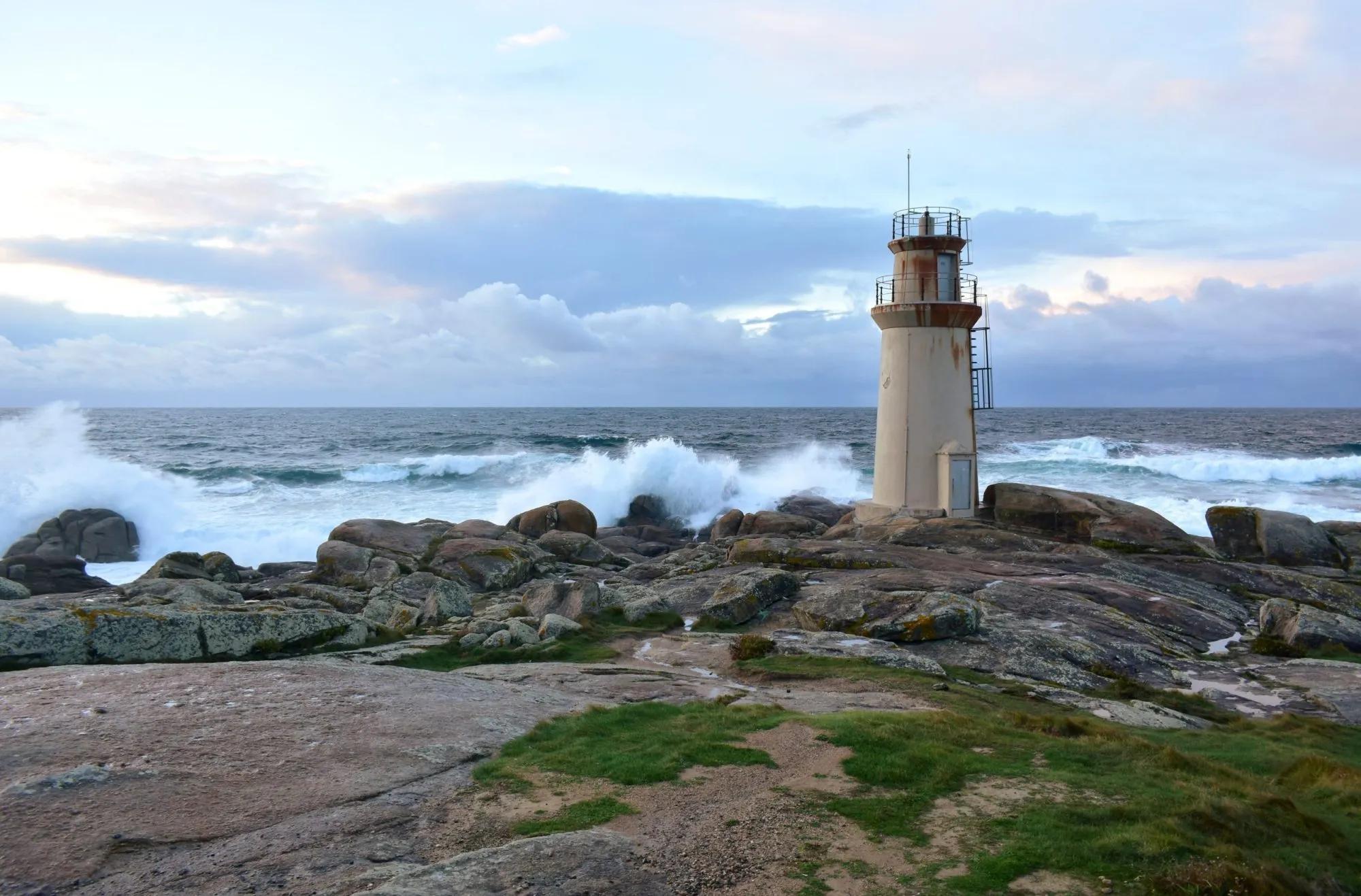









Camino Finisterre
7 days / 6 nights
|
Starting point
Santiago de Compostela
Finish point
Cape Finisterre / Muxia
Season
From April to October
Technical level
1/5
Fitness level
4/5
Tour type
Pilgrimage
Starting point
Santiago de Compostela
Finish point
Cape Finisterre / Muxia
Season
From April to October
Technical level
1/5
Fitness level
4/5
Tour type
Pilgrimage
Highlights
- Traverse the ancient Camino Finisterre leading to the historic 'End of the World'
- Immerse yourself in the spiritual journey following the path of medieval pilgrims from Santiago de Compostela
- Experience the profound beauty of the Galician coastline, featuring stunning views and serene beaches
- Explore the unique towns of Finisterre and Muxía
- Discover the blend of pagan and religious traditions in Muxía
- Witness the striking sunset over the Atlantic at the Cape Finisterre lighthouse
Itinerary of the trip
FREE ITINERARY
Get Your Travel Itinerary
Loved the itinerary? Enter your email below, and we'll send a copy straight to your inbox.
What’s included in the price?
Self-guided
NOT INCLUDED
OPTIONAL EXTRAS
What to bring to the tour
- Hiking shoes/boots
- 25 to 35-liter backpack
- Base layer
- Sports T-shirts
- Hiking shorts
- Hiking water-repellent pants
- Waterproof jacket
- Midlayer
- Sports socks and underwear
- Leisurewear for evenings
- Shade hat/cap
- Sunscreen
- Sunglasses
- Hiking poles
- ID card or passport
- Snacks
- Cash
- Water bottles or hydration pack
- Toiletries
Beginning in Santiago de Compostela and stretching to the storied cliffs of Finisterre, this route has long been a continuation of the Way of St. James, leading pilgrims from the revered Cathedral of Santiago to what was once the edge of the known world.
The route's historical significance is rooted in its name, Finisterre – derived from the Latin 'finis' for 'end' and 'terrae' for 'earth.' It was the medieval symbol of the world's boundary.
Today, the Camino Finisterre is cherished for more than its spiritual essence; it is a path of breathtaking natural beauty. From the tranquil towns of Finisterre and Muxía to the serene coastal views, it offers a peaceful retreat at the journey's end.
This path stands alone as the only Camino that commences in Santiago de Compostela, making it a unique choice for those who seek to extend their pilgrimage beyond the traditional route.
At Camino de Santiago Tours, we ensure that this historic journey is as enriching as it is effortless. From arranging comfortable accommodations to managing luggage transfers, our dedicated support is with you every step of the way.
Equipped with a comprehensive travel booklet and GPS navigation, pilgrims are well-prepared to explore the Camino Primitivo's secrets and wonders.
So, if the call of ancient paths and the allure of the 'End of the World' beckons, let us guide your steps. With our expertise, the legends of the Camino are not just stories but experiences waiting for you.
Start planning today!
The sooner the better - guaranteed availability and best prices if you don't wait for too long.
Frequently Asked Questions
Ratings & Reviews

5.0 average rating

We had a lovely hike today with our guide Klemen. He personalized the tour on our needs and interests, so that we saw places we wouldn't without his experience. The hike was a little bit slippery after the rain from the last days and it went a lot upwards, but it was totally worth it! Thanks again :)


We had a lovely hike today with our guide Klemen. He personalized the tour on our needs and interests, so that we saw places we wouldn't without his experience. The hike was a little bit slippery after the rain from the last days and it went a lot upwards, but it was totally worth it! Thanks again :)


All available guidance options
Self-guided
Are you looking for a good adventure and limitless flexibility? Then you should try out a self-guided tour, perfect for independent explorers who want to set their own pace. Without the need to stick to a group schedule, you’re free to linger at scenic viewpoints while the logistics are taken care of in advance.

HASSLE-FREE
We handle itineraries, accommodations, and anything else you prefer not to deal with, so you can enjoy a carefree hike.
.svg)
TRIED & TESTED ADVENTURES
Only the best of Camino de Santiago, cherry-picked by our local team with an in-depth knowledge of the region.

SELF-GUIDED TRAVEL
Explore independently and with confidence while we keep everything running from behind the scenes.
TRUSTED BY MANY
Since 2014, we have taken care of thousands of happy customers, making it our mission to put your satisfaction first.




































